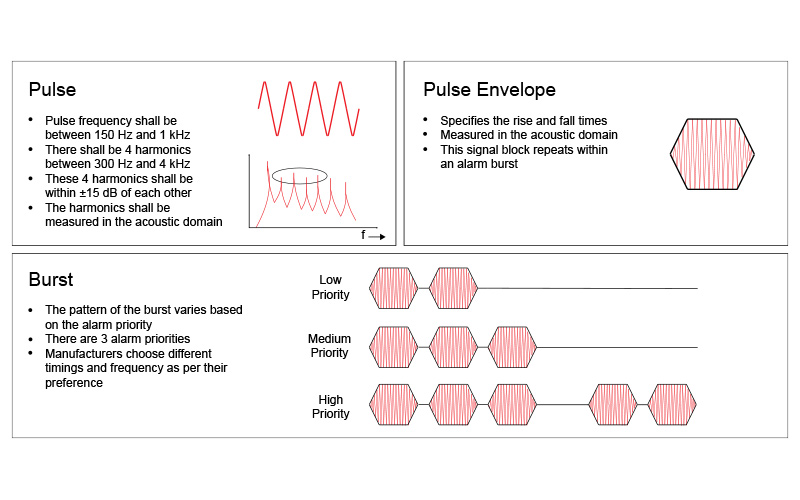SSZT261 august 2020 DAC53701
Sanjay Pithadia co-authored this technical article.
If you have ever heard the not-so-melodic alarm of a patient monitor in an intensive care unit (ICU) or even on a TV show or movie set in a hospital, you might remember that these alarms have particular patterns. These specific patterns help a caregiver distinguish between critical and non-critical alarms from a distance.
A patient’s life often depends on the proper functionality of medical devices used in an ICU. These medical devices must comply with basic safety and performance requirements defined by various standard bodies like those established by the International Electrotechnical Commission (IEC). In most cases, the “essential” performance of a medical device includes raising both visual and auditory alarms in order to alert caregivers to take corrective action. Thus, a medical alarm acts as an essential function in such medical devices.
Multiparameter patient monitors, neonatal warmers and incubators, anesthesia delivery systems, dialysis machines, infusion pumps, ventilators, and surgical equipment are all examples of medical equipment that need an alarm.
A medical alarm system needs to be functional for all intended uses, as well as foreseeable misuses and single-fault conditions identified for the specific device. It needs to implement redundancy and must be audible inside the ICU without having audio harmonic cancellation. Some medical device standards such as neonatal incubators also demand a minimum sound pressure level at a specific distance from the medical equipment.
The IEC 60601-1-8:2006 lists the requirements for an alarm system in medical equipment. In medical equipment like neonatal incubators, the visual and auditory alarms can act as complementary alerts. However, in devices like ventilators and suction pumps, the alarm system needs to implement explicit redundancy.
The IEC60601-1-8 standard classifies alarms according to a low, medium or high priority of an abnormality or failure event. Accordingly, the visual alarms have defined colors such as green, amber, and red that correspond to priority levels, and the auditory alarms have defined waveform patterns, acoustic levels and harmonic responses.
The IEC standard is very specific for auditory alarms, defining the pulse frequency range, shape of the pulses and pattern of the signal burst. The standard also defines a maximum amplitude difference between the pulses. However, the most challenging requirement is the maximum amplitude difference between the first four harmonics, which is measured in the acoustic domain in an anechoic chamber with a reflective floor. The harmonics requirement makes sure that there are no spots in the ICU where the direct and reflected harmonics of the auditory alarm cancel each other, which would make the alarm practically inaudible. Plus, hardware-based real-time tuning of parameters during compliance testing is challenging and expensive.
All of these constraints create long learning cycles for medical device designers, who are mainly electrical, mechanical or software engineers.
Figure 1 provides a glimpse into typical terminology of alarm designs and requirements. It shows three important aspects of the alarm tone: the burst, the pulse envelope and the pulse.
 Figure 1 Medical Alarm
Terminology
Figure 1 Medical Alarm
TerminologyFor the alarm pulse, the fundamental frequency needs to be between 150 Hz and 1 kHz so that the first four harmonics are between 300 Hz and 4 kHz. In terms of amplitude, these four harmonics should be within ±15 dB of each other. The pulse envelope has specific rise and fall time requirements in the range of 7.5 ms to 100 ms that are measured in acoustic domains. The burst frequency varies depending on alarm priority (low, medium or high). Medical equipment manufacturers can choose different burst timings and frequency.
The IEC standard specifies all of these different parameters. In the next installment of this series, we will talk about the design considerations and existing implementation techniques for medical alarms.
Additional resources:
- Learn more about TI’s technologies for medical applications.
- Explore our alarm tone generator reference design.
- Read more about guidelines for medical alarm system software design.